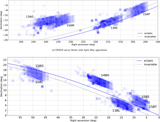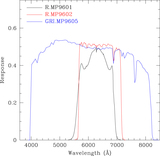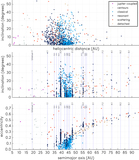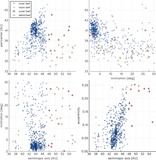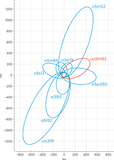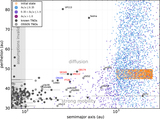Image Details
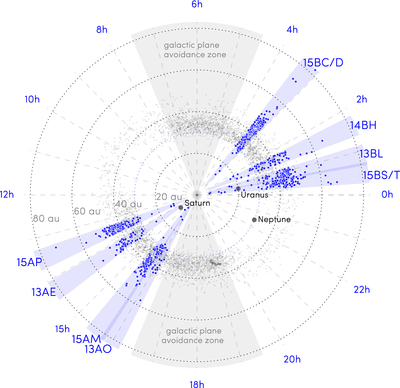
Caption: Figure 1.
Spatial relationship of the regions of sky targeted by OSSOS to the geometry of the outer solar system. The eight sky blocks are indicated by blue wedges, flattened from their low 0°–10° inclinations into the plane (the on-sky projection is shown in Figure 2). The blocks were placed to avoid the dense star fields of the galaxy (schematically indicated by gray shading). Gray dots show the predicted position density of the observable fraction (mr < 24.7) of objects in the 3:2 resonance with Neptune, as modeled by Gladman et al. (2012). Blue dots are the 840 characterized OSSOS discoveries (Table 3), which were found at heliocentric distances between 6 and 83 au. The sensitivity of OSSOS to distant moving objects extends beyond the figure boundaries to ∼100–130 au and is discussed in Section 2.9.
Copyright and Terms & Conditions
© 2018. The American Astronomical Society. All rights reserved.


